
The Turkish War of Independence was a series of military campaigns and a revolution waged by the Turkish National Movement, after parts of the Ottoman Empire were occupied and partitioned following its defeat in World War I. The conflict was between the Turkish Nationalists against Allied and separatist forces over the application of Wilsonian principles, especially national self-determination, in post-World War I Anatolia and Eastern Thrace. The revolution concluded the collapse of the Ottoman Empire; the end of the Ottoman sultanate and the Ottoman caliphate, and the Republic of Turkey was declared in Anatolia and Eastern Thrace. This resulted in a transfer of vested sovereignty from the sultan-caliph to the nation, setting the stage for Republican Turkey's period of nationalist revolutionary reform.
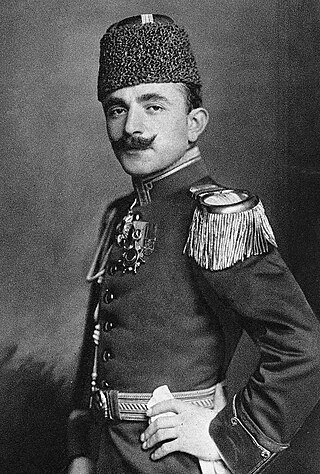
İsmail Enver, better known as Enver Pasha, was an Ottoman military officer, revolutionary, and convicted war criminal who formed one-third of the dictatorial triumvirate known as the "Three Pashas" in the Ottoman Empire.
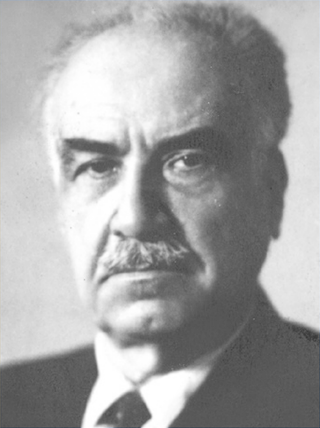
Mustafa Fevzi Çakmak was a Turkish field marshal (Mareşal) and politician. He served as the Chief of General Staff from 1918 and 1919 and later the Minister of War of the Ottoman Empire in 1920. He later joined the provisional Government of the Grand National Assembly and became the Deputy Prime Minister, Minister of National Defense and later as the Prime Minister of Turkey from 1921 to 1922. He was the second Chief of the General Staff of the provisional Ankara Government and the first Chief of the General Staff of the Republic of Turkey.

Nureddin Ibrahim Pasha, known as Nureddin İbrahim Konyar from 1934, was a Turkish military officer who served in the Ottoman Army during World War I and in the Turkish Army during the Western Front of the Turkish War of Independence. He was called Bearded Nureddin because being the only high-ranking Turkish officer during the Turkish War of Independence sporting a beard. He is known as one of the most important commanders of the war. He ordered several murders and massacres.
The Second Battle of İnönü was fought between March 23 and April 1, 1921 near İnönü in present-day Eskişehir Province, Turkey during the Greco-Turkish War (1919–22), also known as the western front of the larger Turkish War of Independence. It marked a turning point in the Greco-Turkish War and the Turkish War of Independence of which it was a part, as Greek forces had previously been victorious over mostly irregular Turkish forces and suffered their first major halt in Asia minor campaign.

Musa Kâzım Karabekir was a Turkish general and politician. He was the commander of the Eastern Army of the Ottoman Empire during the Turkish War of Independence, and fought a successful military campaign against the Armenian Democratic Republic. He was the a founder and leader of the Progressive Republican Party, the Turkish Republic's first opposition party to Atatürk, though he and his party would be purged following the Sheikh Said revolt. He was rehabilitated with İsmet İnönü's ascension to the presidency in 1938 and served as Speaker of the Grand National Assembly of Turkey before his death.

The Turkish National Movement, also known as the Anatolian Movement, the Nationalist Movement, and the Kemalists, included political and military activities of the Turkish revolutionaries that resulted in the creation and shaping of the modern Republic of Turkey, as a consequence of the defeat of the Ottoman Empire in World War I and the subsequent occupation of Constantinople and partitioning of the Ottoman Empire by the Allies under the terms of the Armistice of Mudros. The Turkish revolutionaries rebelled against this partitioning and against the Treaty of Sèvres, signed in 1920 by the Ottoman government. Most revolutionaries were former members of the Committee of Union and Progress.

The Sivas Congress was an assembly of the Turkish National Movement held for one week from 4 to 11 September 1919 in the city of Sivas, in central-eastern Turkey, which united delegates from all Anatolian provinces of the Ottoman Empire, defunct at the time in practical terms. At the time of the convention, the state capital (Constantinople) as well as many provincial cities and regions were under occupation by the Allied powers preparing for the partition of the Ottoman Empire. This was part of the wider conflict of the Turkish War of Independence.

Erzurum Congress was an assembly of Turkish Revolutionaries held from 23 July to 4 August 1919 in the city of Erzurum, in eastern Turkey, in accordance with the previously issued Amasya Circular. The congress united delegates from six eastern provinces (vilayets) of the Ottoman Empire, many parts of which were under Allied occupation at the time.

Bekir Sami Bey was a Turkish politician of Ossetian origin. He served as the first Minister of Foreign Affairs of Turkey during 1920–1921.
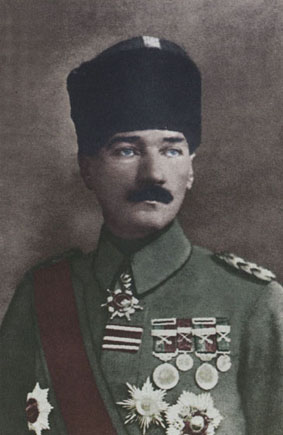
Mustafa Kemal Atatürk was a field marshal, revolutionary statesman, and founder of the Republic of Turkey as well as its first president. Mustafa Kemal Atatürk's military career explains his life between graduation from Ottoman War College in Istanbul as a lieutenant in 1905 to his resignation from the Ottoman Army on 8 July 1919, as well as his military leadership throughout the subsequent Turkish War of Independence.
The Freedom and Accord Party was a liberal Ottoman political party active between 1911 and 1913, during the Second Constitutional Era. It was the most significant opposition to Union and Progress in the Chamber of Deputies. The political programme of the party advocated for Ottomanism, government decentralisation, the rights of ethnic minorities, and close relations with Britain. In the post-1918 Ottoman Empire, the party became known for its attempts to suppress and prosecute the CUP.
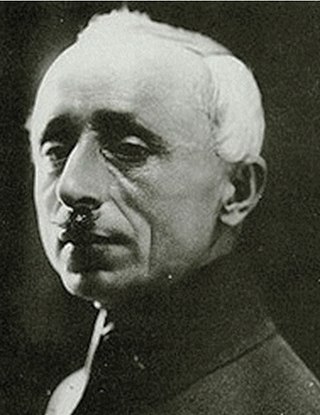
Refet Bele, also known as Refet Bey or Refet Pasha was a Turkish military commander. He served in the Ottoman Army and the Turkish Army, where he retired as a general.
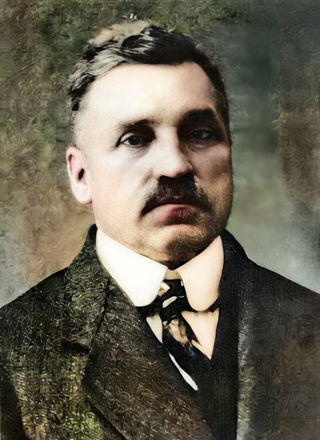
Selanikli Mehmed Nâzım Bey also known as Doktor Nazım was a Turkish physician, politician, and revolutionary. Nazım Bey was a founding member of the Committee of Union and Progress, and served on its central committee for over ten years. He played a significant role in the Armenian genocide and the expulsion of Greeks in Western Anatolia. He was convicted for allegedly conspiring to assassinate Mustafa Kemal Atatürk in İzmir and was hanged in Ankara on 26 August 1926. He also served as the chairman of the Turkish sports club Fenerbahçe S.K. between 1916 and 1918.
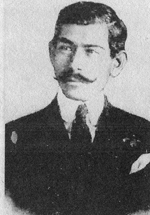
Kara Vâsıf Bey, later known as Mustafa Vasıf Karakol, was an officer of the Ottoman Army, and a politician of the Republic of Turkey. He was one of the founding members of the Karakol society and his family took the surname "Karakol" after his death.

The Committee of Union and Progress, refers to several revolutionary groups and a political party active between 1889 and 1926 in the Ottoman Empire and the Republic of Turkey. The foremost faction of the Young Turks, the CUP instigated the 1908 Young Turk Revolution, which ended absolute monarchy and began the Second Constitutional Era. After an ideological transformation, from 1913 to 1918, the CUP ruled the empire as a dictatorship and committed genocides against the Armenian, Greek, and Assyrian peoples as part of a broader policy of ethnic erasure during the late Ottoman period. The CUP and its members have often been referred to as Young Turks, although the movement produced other political parties as well. Within the Ottoman Empire its members were known as İttihadcılar ('Unionists') or Komiteciler ('Committeemen').

Committee of Representation was the executive branch of Turkish nationalists before the opening of Turkish Grand Assembly in the 1919–1920 period.

In 1926, the Turkish police arrested dozens of people, including ex-ministers, lawmakers and governors, accused of plotting to assassinate the 1st President of Turkey Mustafa Kemal Pasha on 14 June 1926 in İzmir.

Fikriye Hanım, posthumously Zeynep Fikriye Özdinçer, was a Turkish woman. She was a relative of Mustafa Kemal Atatürk and his girlfriend. Some sources claim that they have been married for a certain period of time. Her unexplained death remains mysterious.
The proclamation of the Republic of Turkey, formally declared during the session of the Grand National Assembly of Turkey on 29 October 1923, signifies the definitive establishment of Turkey's governance structure as a republic. This historic milestone was realized through the acceptance of a constitutional amendment proposal crafted by Mustafa Kemal Pasha.
















